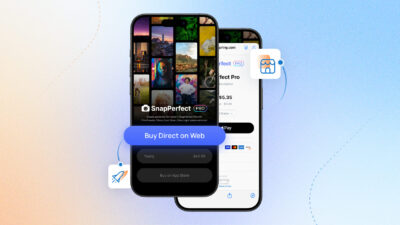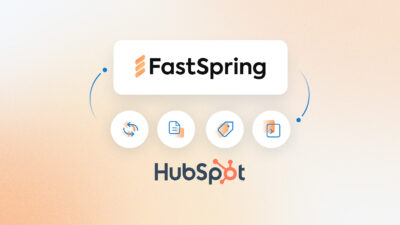Your sales team is working hard every day— do they have access to online tools that can help them work smarter?
While many sites have options for potential customers to try a free demo, fewer than you’d think offer customers the ability to purchase the software directly from the website. Your sales staff is working hard to spread the word about everything your product can do for prospects, but when interested parties visit the website after the sales call is over, they’re faced with a conundrum. How do they actually buy the product?
Or, what about the people your sales team haven’t reached? Your sales team is limited by time and proximity— there are tons of people out there who might be interested, but don’t have the ability to meet with a rep from your company. How do they get the product they need when they need it?
If you’re not enabling your offline sales team with the right online tools, you’re losing out on potential sales. Read on for more information about setting up your sales team for success.
How can Ecommerce Tools Boost Sales?
You might think that implementing an ecommerce store is more trouble than it’s worth. Who’s got the time (or the available staff) to administer the inevitable issues that will come up? Is the outcome worth the pain?
Okay, first things first— setting your website up for ecommerce is not as complicated as you might think it is. Let’s look into some of the reasons why online sales will bolster the efforts of your offline sales team.
- Ecommerce is Popular—Introducing the option to buy your product on your website would allow your company to join the growing trend of ecommerce. In the US alone, ecommerce retailers brought in $322.17 billion in 2016, and it’s estimated that the number will grow to $4 trillion worldwide by 2020. Customers like to have the option to purchase your product on your website, particularly Millennials and Gen X-ers.
- Seamless Transaction— As potential customers read about how amazing your product is and how it can resolve their problems, it’s likely that they’ll be inspired to make a purchase right then. If you have a “Buy Now” button, they can do just that— make the purchase before they have time to re-think it. If you direct them elsewhere, it’s far more likely that they will become distracted and extract themselves from the process before they actually buy your product. The fewer steps the better in the world of retail.
- Stay In Control— if you sell your own product on your website, you maintain control. You’ll set the price, you’ll control the messaging, and you’ll be able to use the credibility you’ve built up by interacting with potential customers on social media, in person through your sales team, and through your thoughtful and valuable web content to boost your bottom line. When it’s on your website, you’re the boss.
- Better for the Brand— Your sales team has just finished selling a customer on all the great features of your product, sharing with them how your product will change the way they do business. “Sounds great! How do I get started?” the customer asks. And your sales team points them to website— a website that’s not yours. Imagine what a boost it would be to your brand if the client’s experience stayed with your company from start to finish. No jumping from site to site, but rather a streamlined and professional process, with your brand front and center at every step of the way.
- Self-Service Model— The self-service sales model enables anyone who your sales team can’t reach to explore and purchase your product on their own. This will allow your sales team to focus on the clients who prefer a face-to-face meeting— any client who wants to learn more about the product but has no time (or interest) to meet with your sales team can check it out at their leisure. Your team is available if they want to talk, but there’s no pressure.
Consider an end-to-end Ecommerce Solution
One of the big reasons that companies are reluctant to introduce an online sales component is fear. They fear that it’s going to be too complicated to implement, too difficult to maintain, and too much work in general.
Enter the end-to-end ecommerce solution.
A fully-integrated ecommerce solution offers you everything you need an online sales platform. It delivers:
- Easy Maintenance—You and your team won’t spend time keeping your website’s store on track. Instead, you can focus on growing your business and improving upon the product you’re selling.
- Globalization— Your product won’t be limited to sales in your country. With a full-stack ecommerce solution, you’ll be able to sell anywhere, anytime in the currency of the buyer’s choice.
- Back-Office Management— Worried about who will handle all of the small but important details that go with ecommerce? With a full-stack solution, you can put it out of your mind. Tasks such as chargebacks, taxes, and customer relations will be handled— no need to pull vital personnel from their work to do an altogether different job.
- Subscription Billing Options— Looking for a new and different way to sell your product? A full-stack ecommerce platform can help you with the ins and outs of subscription management, offering your customers a variety of ways to enjoy your product.
- Strong Security— Some businesses fear that implementing an online sales option could introduce the specter of data breaches. Huge companies, such as Anthem and Target, have experienced massive attacks—what’s to stop the hackers from targeting you? A platform with advanced data security will prevent the breach you fear, which is reassuring to you as well as to your customers.
Ready to see what a full-stack solution like FastSpring has to offer? Click here to see a demo today.









